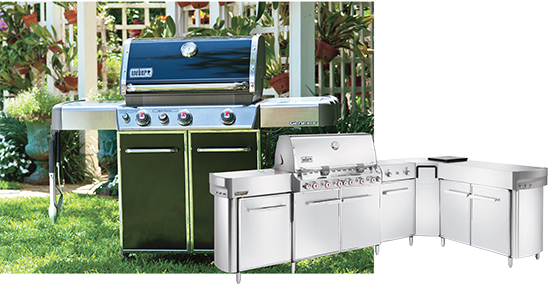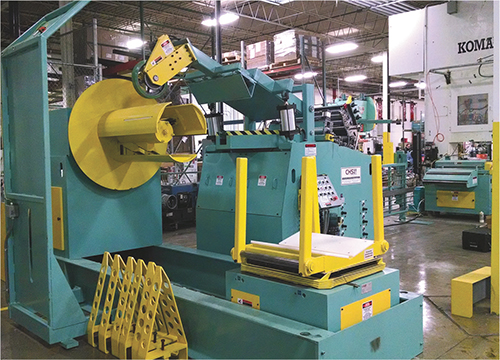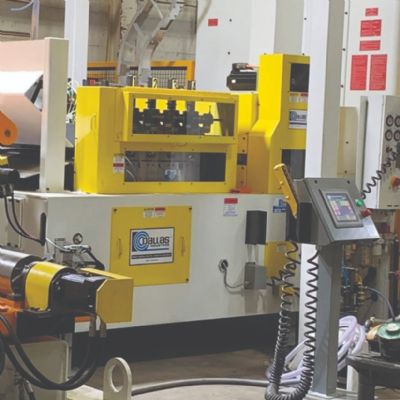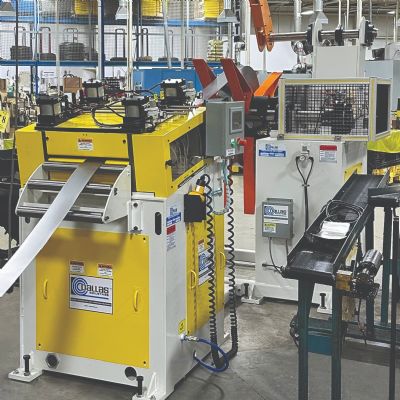Easy Cleaning
Also a challenge to the project was the need to handle a range of material types, including galvanized and aluminum along with stainless steel. The Weber manufacturing team seeks to use its newest stamping line to run several of its progressive dies, regardless of material type.
“Any debris on the rolls can cause quality issues,” says Dave Lohbauer, senior vice president of quality. “That means we need to often clean the straightener rollers between setups. This is where the high-lift straightener head really proves useful. The ability to quickly and easily open up the head for cleaning minimizes changeover time and optimizes our run time—our operators and maintenance staff really appreciate this feature.”
“Also helping to straighten the wide variety of material types,” adds Galuszka, “is the straightener’s independent roll adjustment, rather than a bank-type setup.” On the feed side, the Weber production team and CHS specified large roll diameters (3 in.) and bearing surfaces, to minimize deflection and ensure consistent slip-free feed, “which can be a challenge with thinner materials,” says Galuszka. “And, we expect that the larger bearing surfaces will prolong bearing life. “To handle the delicate materials without leaving any marks,” Galuszka continues, “the rolls are coated with #5 Crodon, a better fit for our application than the more typical and heavier #3 Crodon coating that we felt could cause part marking.” “The servo feed also features an adjustable-stroke cylinder for piloting,” adds Lohbauer. “This allows us to adjust the pilot/feed roll travel to minimize roll lift based on the material thickness being stamped. And, the feeder includes a MultiMediaCard reader. We can store all of the feed parameters for each die on the cards as backup should we need to change out the drive.” What Else is Cooking? With new Weber grill models introduced in 2013, and likely more coming soon, the pressroom hasn’t seen its last piece of new equipment, by far. Delivered in late November and expected to be commissioned early in 2015: a new 800-ton Heim straightside press accompanied by another well-equipped CHS feed line.
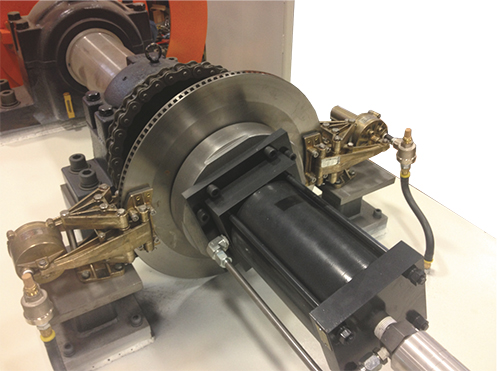
Weber worked closely with CHS to provide several
feed-line features to meet its specific application-based requirements.
Among them is the dual-caliper failsafe braking system on the coil reel,
shown here. The braking system is self-monitoring and auto-adjusting
based on laser gauging of coil OD, significantly more operator-friendly
than feed lines that require operators to constantly make adjustments.
View Glossary of Metalforming Terms
See also: Komatsu America Industries, LLC Press Technology Division, Pneumatic Feed Service
Technologies: Coil and Sheet Handling, Pressroom Automation
Comments
Must be logged in to post a comment. Sign in or Create an Account
There are no comments posted. Coil and Sheet Handling
Coil and Sheet HandlingFour Before the Floor—Dallas Industries at FABTECH 2023
August 21, 2023
 Video
Video






